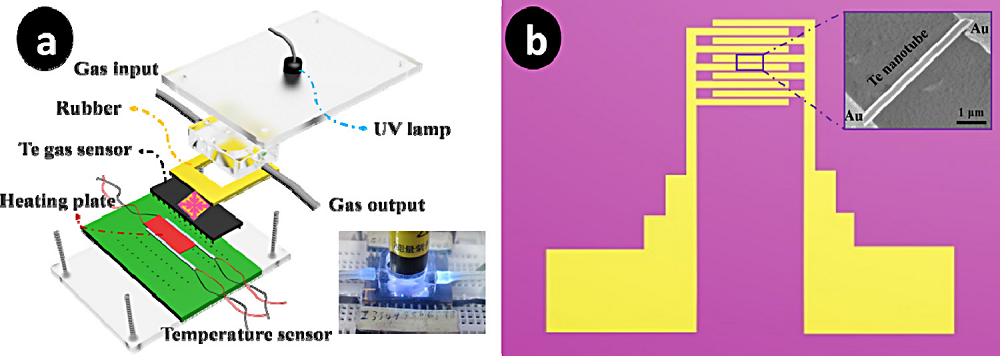文章专利

- 地址: 江苏省苏州市苏州工业园区若水路398号
- 邮箱: tzhang2009@sinano.ac.cn
- 电话: 86-512-62872706
- 传真: 0512-62603079
- 网址: http://nanosensor.sinano.ac.cn

Lei Guan, Shun Wang*, Wen Gu, Jin xia Zhuang, Huile Jin, Weiming Zhang, and Ting Zhang*, Jichang Wang*. Ultrasensitive room-temperature detection of NO2 with tellurium nanotube based chemiresistive sensor. Sensors and Actuators B: Chemical, 2014, 196, 321-327.

Abstract
Te nanotubes were synthesized through a microwave reflux method that employed a mixture of poly-ethylene glycol and water as solvent. The water content was used to manipulate the boiling temperatureof the solvent. Characterizations of the Te products with scanning electron microscopy, transmissionelectron microscopy, energy dispersive spectroscopy and X-ray diffraction spectroscopy indicate thatthe growth of Te nanotubes is governed by both diffusion-limited depletion at the surface of seeds anddissolution–crystallization process. A chemiresistive sensor constructed with the as-prepared Te nano-tubes exhibits excellent sensitivity and selectivity to trace amount of NO2 at room temperature, where thelow detection limit is found to near 500 ppt. The response of the gas sensor is totally reversible with theassistance of UV irradiation, in which increasing the UV exposure reduces the sensor recovery time to lessthan 5 min. The great performance of this Te-based gas sensor is attributed to the large surface-to-volumeratio and high crystallinity of these Te nanotubes.
Full Article:http://www.sciencedirect.com/science/article/pii/S0925400514001622
